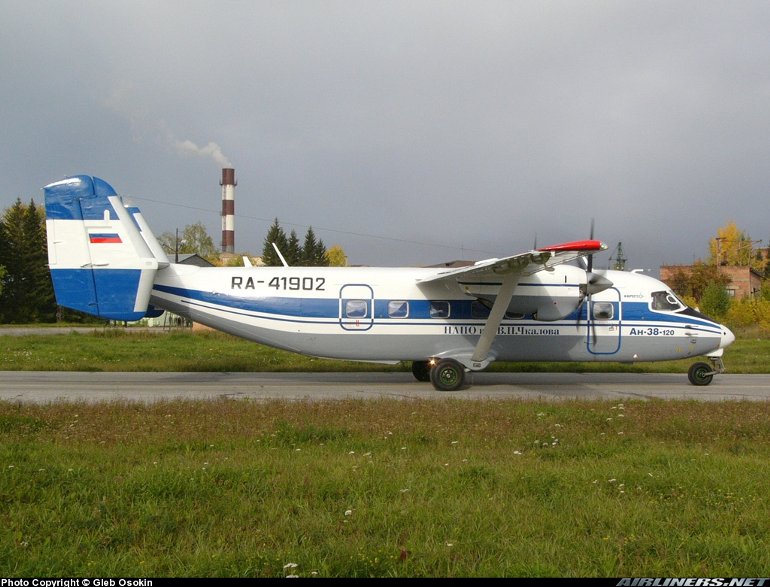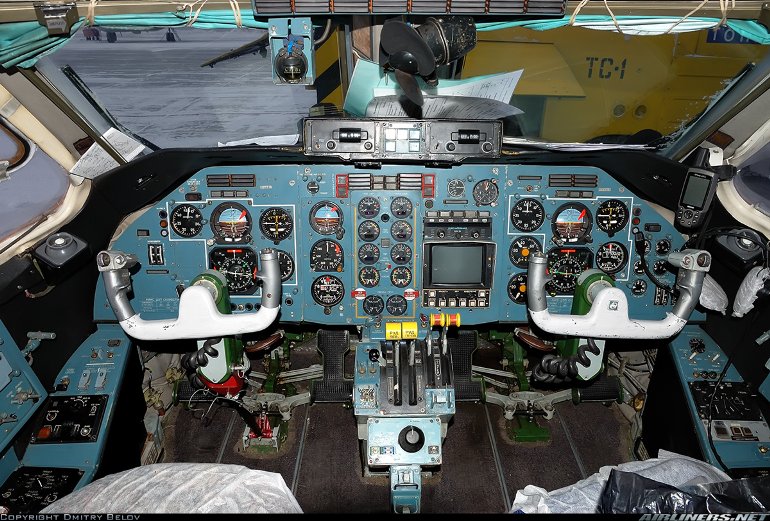Aircraft Technical Data
Antonov An-38


| Details | |
| Country of Origin | Ukraine |
| Type | Regional airliner and utility transport |
| History | The An-38 is an all-new development of the earlier An-28, series production of which had been transferred to PZL-Mielec in Poland. During a sales tour of India in 1989 a requirement emerged for a larger 25-30 seat version of the An-28. Late 1990 this was approved by the Soviet Ministry of Transport. At the 1991 Paris Air Show a model was shown and details were made public for the first time. The aircraft is intended to replace An-24s, Let L-410s and Yak-40s. As the An-28 was produced in Poland, and had to be paid in foreign currency after the break-up of the Soviet Union, payment in local currency was an added advantage for the development of the An-38. The An-38 retains the basic wing and twin fin tail structure of the An-28, but has a stretched fuselage with three additional seat rows. New high efficiency Honeywell TPE331 or Omsk TVD-20 engines power the An-28. Many other improvements have been made such as improved sound and vibration insulation, reduced external noise, improved cockpit and passenger cabin comfort, payload, fuel efficiency and flight speed. The An-38 is equipped with a rear cargo door and a cargo-handling overhead-track hoist. The seats and the baggage compartment can be folded by the crew to provide a clear space for use as a cargo aircraft. The fixed tricycle gear with low pressure tires enables operation from unpaved runways. The An-38 has weather radar and an integrated navigation system and can be operated by night and in adverse weather. It can be equipped with Western or CIS avionics. Apart from passenger and cargo configuration, the multirole An-38 can also be equipped for forest patrol, aerial photography, survey, fishery patrol, ambulance, VIP transport and military airlift. The first flight was made on June 23 1994 by the version with TPE331 engines, the An-38-100. The TVD-20 version, the An-38-200, followed on December 11 2001. Certification of the An-38-100 in compliance with AP-25 rules was granted April 22 1997. The An-38-200 was certificated on November 28 2002. The An-38-110 is a -100 with a reduced avionics fit, the An-38-120 is a -100 with an enhanced avionics fit. In December 1995 Antonov and NAPO (Novosibirsk Aircraft Production Association) established a joint venture company, Siberian Antonov Aircraft, to produce, market and provide after-sale support of the An-38. Series production of the An-38-100 aircraft is by NAPO. Two prototypes (one at Antonov and one at NAPO) and a static test airframe were built. Vostok Airlines became the launch customer for the production aircraft and the first three were received by mid-1995. The An-38 also entered service with e.g. Layang Layang Aerospace in Malaysia, Alrosa-Avia in Russia, and Vietnam Air Services. |
| Powerplants | An-38-100 - Two 1118kW (1500shp) Honeywell TPE331-14GR-801E turboprops driving Hartzell five blade propellers. An-38-200 - Two 1030kW (1380shp) Omsk TVD-20 turboprops driving Aerosila propellers. |
| Performance | An-38-100 - Max cruising speed 405km/h (219kt), nominal cruising speed 380km/h (205kt). Range at 3050m (10,000ft) with maximum payload 700km (380nm), with 1300kg (2865lb) payload 1750km (945nm). An-38-200 - Range at 3050m (10,000ft) with maximum payload 780km (420nm), with 1300kg (2865lb) payload 1780km (960nm). |
| Weights | An-38-100 - Empty 5300kg (11,684lb), max takeoff 9500kg (20,945lb). An-38-200 - Max takeoff 9930kg (21,891lb). |
| Dimensions | Wing span 22.06m (72ft 5in), length 15.67m (51ft 5in), height 5.05m (16ft 7in). |
| Capacity | Flightcrew of two. Standard passenger seating for 26 at three abreast, optionally 27 seats at 75cm (29in) pitch. |
| Production | 11 (mid 2004). |
| Related Links | Antonov An-38 |
The backbone of this section is from the The International Directory of Civil Aircraft by Gerard Frawley and used with permission. To get your own copy of the book click here. |
|








